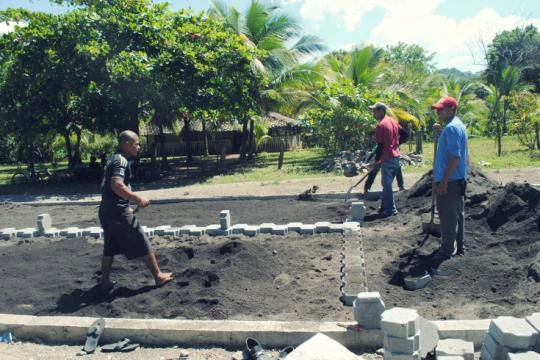I remember a visit to Nicaragua like it was only yesterday. Three years have passed, and it is still etched in my mind. I was visiting a road construction project when I realized that the paving surface was not the typical asphalt I was used to seeing on many road projects but some form of concrete like paving blocks known as adoquines.
I had seen these before as they are prevalent in many areas of the world in urban streets in different sizes and shapes. Except these were being used in a rural context over long stretches.
The quality of the work was quite exceptional so I thought maybe some contractor was responsible for the fruits of this labor. The blocks were interlocking beautifully, and the road had the proper camber sloping on both sides to drain off excess water. The side drains on the sides of the road were also well constructed.
I also noticed that the community delegation had a higher percentage of women representatives than our team which made me all gender conscious! We were proudly informed that while the earthworks were indeed done by local contractors, the building process with the adoquines was undertaken by the local residents themselves organized in some form of community participation associations known as modulos comunitarios de adoquinado (or MCAs for their acronym in Spanish).
The engineer in me immediately began asking questions: Why were they not using asphalt? Why were the local people being assigned such important work? Why were they using these adoquines on long stretches and not in limited urban stretches?
My search for answers led me to some important conclusions: There is no one size that fits all for road infrastructure delivery, what works in one country does not necessarily have to work in others. Infrastructure delivery has to go beyond cookie-cutter solutions and consider the country context, the availability of materials, equipment needs and labor. More importantly, it should consider aspects of social inclusion, how to involve local people not only in the prioritization of the infrastructure but actually in helping to deliver it.
Adoquines builds a sense of ownership unlike what I had seen in other sites. Everyone was looking out for the best result because it was “their” road. Expensive blocks were stacked up on the sides of the road and no one was trying to steal them overnight. Previously unemployed youth were being given an opportunity to get their foot into the door in the employment world, or at least gain valuable technical skills.
Over many more similar visits around the country, I got the chance to hear peoples’ stories: local mayors testifying the road to be the best thing that had ever happened to their village, kids that no longer had to walk in the mud to get to school, residents who did not have to inhale dust each time the public bus drove by transporters who no longer had to wait for the weather to change or help to come and get their vehicle unstuck while losing valuable and perishable products like milk..
And there are the stories I didn’t get to hear but I knew lay behind those smiling proud faces when the road was completed.



Join the Conversation
Good story Steve. On the social inclusion front, this project is a good example of how transport projects can have both direct and indirect impacts on job creation. Direct impacts are most evident when labor-based construction or maintenance methods are favored, as in Nicaragua. As you describe, communications, capacity building and affirmative action can also help to ensure that construction, maintenance... and related service industry opportunities benefit the poor and those with limited ability to make the complementary investments often required for turning infrastructure investments into increased incomes. Final thoughts, do you have any impact evaluation data regarding expenditure paterns in beneficiary communities? Cheers, Jason
Read more Read less